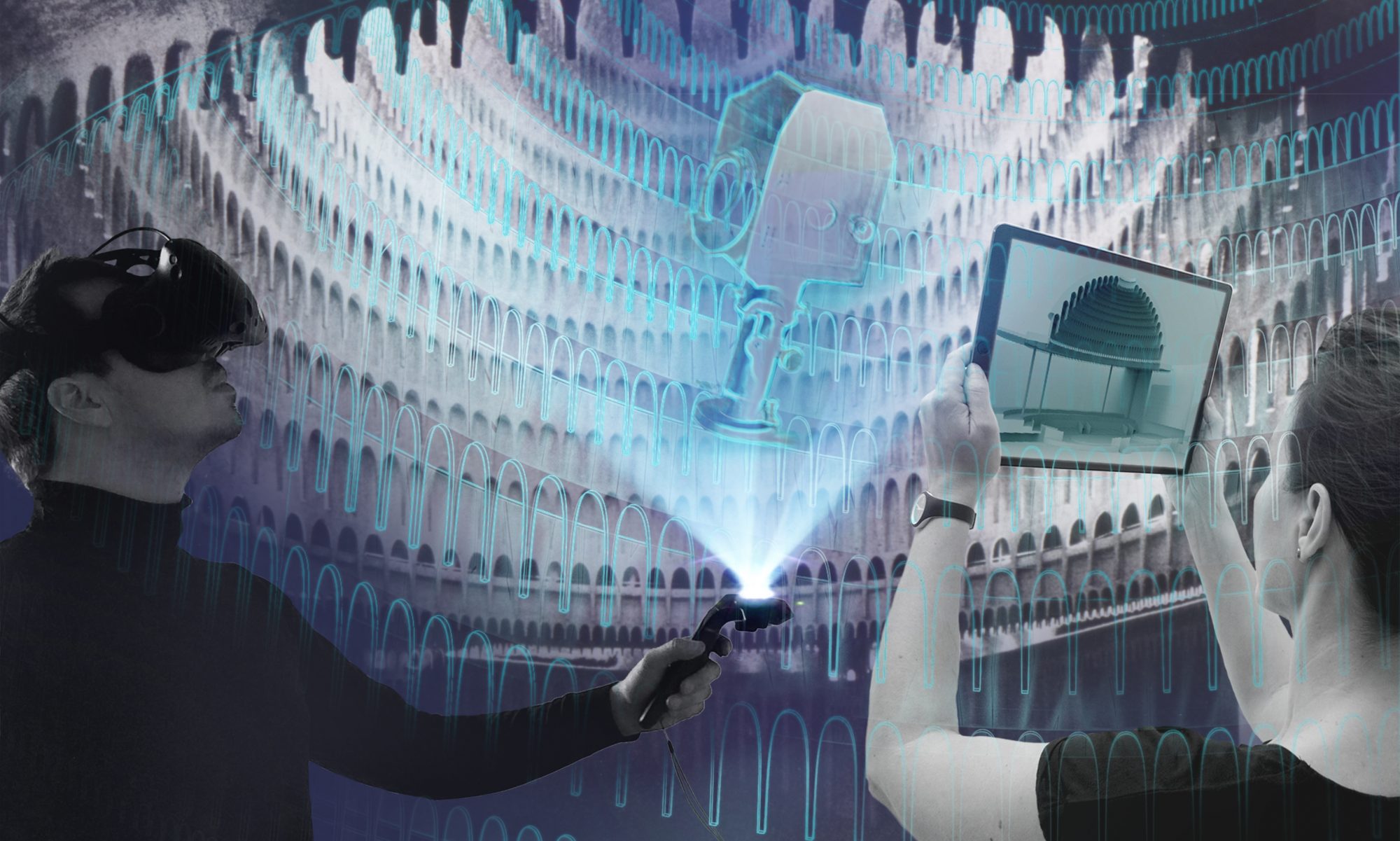The theatre has always been a place for creating fantastic stories, a retreat and a place of longing at the same time. As “world builders”, theatre makers enable their audience to visit diverse places and travel through time to the future and the past. “So this is the material the world of the stage is made of: a mixture of reality and appearance.” In theatre, spacious, participatory and interactive forms of narration are constantly being re-explored and reinvented. Basically, theatre is the analogue and original form of virtual worlds, a kind of “Proto Virtual Reality”. Thus the examination of the narrative forms of artificial realities is almost as old as the human need to escape everyday reality and the urge to discover new worlds.
Consequently, virtual reality is not to be understood as a temporary fashion in the current media landscape, but as a consistent further development of the classical media and art forms into a new and independent medium. This new medium combines different methods and narrative formats. On the one hand, these are time-based, linear dramaturgies as in film and musical formats, on the other hand, they are spatially related narratives as used in exhibitions and theatrical productions. Another important method is derived from interaction possibilities, such as those established in interactive media art or computer games. “It is the motif of the continuous, playful reorganisation of information by the recipients. Multiple perspectives, non-linear narrative forms and an observer who no longer takes a distanced position in the world are topics that can be most convincingly implemented with interactive media. Through combination of the different approaches from these genres, the medium VR holds great potential for experience and offers room for new developments.
By putting on the VR glasses, the viewer steps out of his immediate surroundings and shifts his presence into a digital world and into a new reality. This complete immersion in the virtual experience is called immersion. The distance between users and experience in most narrative formats is eliminated. Therefore, virtual reality can be defined as an immersive, interactive, space- and time-based medium.
This multimodality results in countless new variants of storytelling. Virtual Reality enables a variety of changes in perspective: whether it is the embodiment of different characters or “roles” as well as travelling to other times or an expedition to unreachable places and situations. Physical laws and social conventions can be abolished: Rooms are not only entered, but even flown through, leaps in scale become possible, the viewers themselves become actors.
Increasingly, creative people from film, art, architecture and theatre are dealing with these new narrative forms, after pioneers from game design and industry have set standards. Each of these disciplines adds different perspectives and attitudes to the discourse and exploration of the new spaces of possibility. Similar to the way the museum4punkt0 project explores new application scenarios for mediation with Virtual and Augmented Reality (VR/AR) in the museum and exhibition sector, theatre makers are conquering the virtual stages. Artists such as Evelyn Hriberšek, Carly Lave, the Cyberräuber and Studio Makropol set an example. VR and AR open up new stage spaces here or play a role as a medium in performances. At the institutional level, new structures and networks are now being established – in addition to digital.DTHG, for example, the Akademie für Theater und Digitalität in Dortmund and a number of newly founded courses of study. New foundations and new profiles of specialised courses of study at universities react to the emergence of this new field of work (HTW Berlin, HAW Hamburg, SRH Heidelberg, HS Darmstadt, Brudford College and others). Cross-university networks such as the XR Academic Network in Berlin facilitate the exchange of expertise.
Authors: Franziska Ritter, Pablo Dornhege


